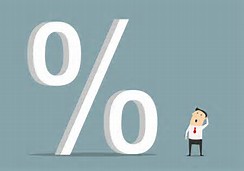Organizing Your Garage
Sunday, April 9th, 2017Organizing the Garage in Zones
Most of the time, few of us actually know where to put and where we have put things in the garage. This makes it even harder to find things after the organizing is done. Implementing specific zones in the garage can make finding your items and tools easier. Here are few ideas and simple steps to help take your garage to the next level.
Plan the zones. Before starting to organize anything, plan zones specific to your family’s needs. Your garage could have a mudroom zone, beach zone, snow removal zone, etc. This is a wonderful customized plan that is entirely based on what you actually use.
Start simple. As with anything, don’t stress yourself out so badly that you lose your taste for organizing. There are so many different ways to organize the garage and none of them are wrong, or even right. To find your perfect garage zone organization plan, you are in the driver’s seat. You know better than anyone what your family actually needs when it comes to your garage. Zone your garage in a way that will benefit your family best.
One step further. Take the zoning up a notch by trying the following tips: Start the zoning process by dividing items into piles (or areas) that would make sense together. You have boogie boards and pool noodles? Put them in the beach zone. Don’t try having food storage mixed with the garden tool area. That can cause you an organizing headache in no time. When dividing items, remember to put things together that make sense. Are there loose rakes and brooms? Put them in the yard tool section with your brand new leaf blower.
Place yard and garden items where they are most easily accessed. This is will be one of your highest traffic zones. Place lawn mowers, cleaning supplies and even golf clubs in this area. Placing bins in the same area is a great idea for loose garden and yard items. Consider hanging your yard tools such as weed eaters, bush trimmers, edgers and leaf blowers.
Try a garage mudroom. Sometimes you don’t have room for a built in mudroom in house. Why not fashion one in the garage? Try having a garage mudroom to make where the garage and your home meet a little less mess and less stressful on the people who clean it. Children and adults can remove their shoes and coats and place them on shoe racks and easily accessed hooks.
Long term storage is a must. Long term storage is a must have because we all have items that are seldomly used, but we still want them around. Consider your holiday decor in this category. We all love good holiday decorations, but they are really only appropriate within the season. We love this idea for stowing your stuff for the long haul.
Working space needed. The garage is a place for a lot of things, but in reality a lot of our best and largest projects happen in the garage. Don’t forget to leave a little space for you to use for projects. Consider installing a workbench to add more space when it’s tight.
Implementing these simple steps will help you get your garage zoned in a weekend. This will simplify the “finding time” of your items.








